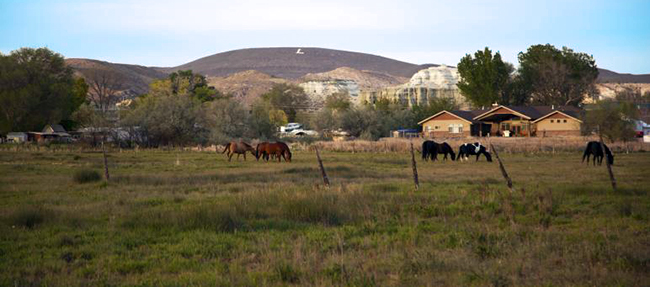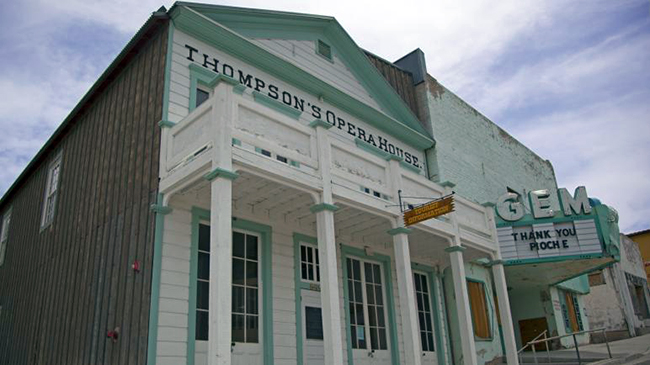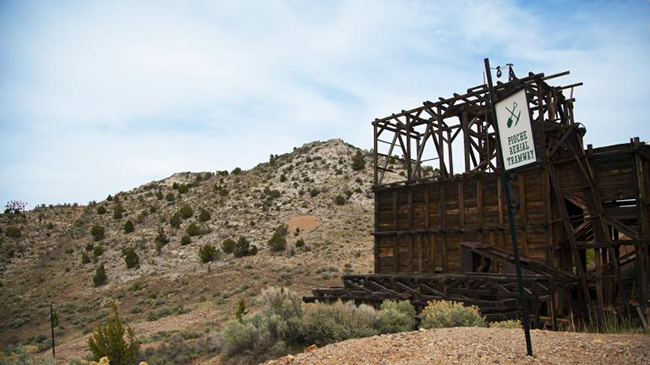The Tale of Two “P”s
July – August 2014
The Tale of Two “P”s
Early settlements embody contrary aspects of the Silver State’s past.
BY RACHEL WILLIFORD | July/August 2014
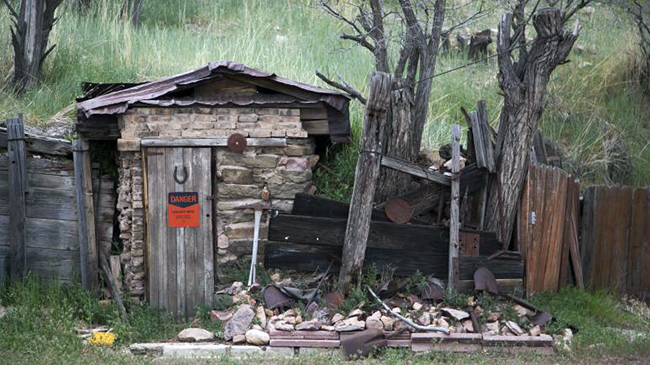
“Go West, young man” was the cry of the day in 1865 after a tumultuous period of civil war and assassination. As America expanded from the mid 1550s to late 1700s, settlers and Native Americans fought a near-continuous battle over dominion. Then gold fever struck. In the 1860s, Nevada flourished with miners pouring into ore-laden areas, while other towns developed as support hubs for the evolving mining camps.
Two towns were established in the Great Basin in eastern Nevada, with divergent lifestyles that would help define Nevada’s tumultuous history: Panaca—the state’s second-oldest permanent settlement, founded by Latter-day Saints pioneers—and 13 miles north, Pioche—arguably, one of the West’s most debauched settlements.
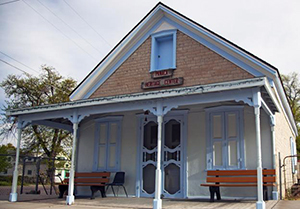
William Hamblin was a Mormon missionary to the Paiute Indian tribe in the Meadow Valley area in eastern Nevada. In 1863, he was presented with a shiny metal specimen discovered in the area. Hamblin persuaded the Paiutes to show him where the metal was found, and samples were sent to Salt Lake City, verifying the value and the area’s potential. The Paiute word for metal, money, and wealth is “Pan-nuk-ker,” and the town was given its name: Panaca.INNOCENT PANACA
Word of lode discoveries in the new territory began spreading like wildfire. A caravan of explorers was sent to the area by Latter-day Saints leader Brigham Young, but there were plenty of others who heeded the call to go West, too.
The Meadow Valley Mining District, including the town of Panaca, was established in April 1864. The area was still a part of Utah Territory, and Young tried to establish order in the Meadow Valley area. He sent Erastus Snow to supply the district with new guidance from Utah. In the Panaca Centennial Book Committee’s “A Century in Meadow Valley,” it notes Snow arrived May 21, 1864, to visit the area, encourage the settlers to cultivate the region for sources they would need to develop, and discourage the “covetousness and a desire for riches to the exclusion of the Spirit of the Lord.”
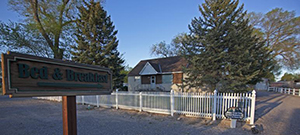
The denizens of Panaca did just that, establishing a quiet, productive farming community thanks to the valley’s lush conditions.
In 1866, the district lines were redrawn, transferring Pioche and Panaca from Utah Territory to part of Nevada Territory’s Lincoln County. The new districts also included the highly anticipated ore-producing Pahranagat Valley Mining District. But as mining peaked in Bullionville and nearby Pioche, the somber, studious Mormon way of life in Panaca made for a strange bedfellow with its neighbor.
INFAMOUS PIOCHE
The influence of the Mormon settlers pushed a good portion of fame-seeking, lawless claim jumpers out of the Panaca and Meadow Valley area. Many headed north to the hype coming from the ledges of Bullionville and further north to Pioche, which was established in 1869, and named for a wealthy French financier who purchased the area’s land. The area boomed, and due to the number of settlers, miners, and gunmen, the town was known as one of the toughest towns in the West. Railways introduced advances—and trouble—to the area; the Pioche & Bullionville Railroad hauled payload to Bullionville, just north of Panaca on U.S. Highway 93, but the trains also delivered the hired gun—sometimes up to 20 a day—to protect the vast profits being recovered from the mountains. The amount of hired guns in Pioche contributed to its lawless reputation.
Pioche was rampant with crime, excitement, and possibility.
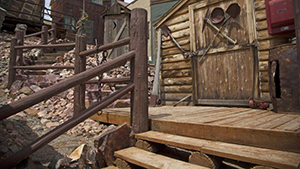
In 1871, Pioche claimed the county seat. That same year, the town suffered a devastating fire, triggered by an explosion of 300 powder kegs, which killed 12 people and almost leveled the town. But it rebounded, and its population by the mid 1870s is said to have reached 12,000, as Pioche welcomed many Chinese miners, plus immigrants from England, Ireland, Denmark, Nova Scotia, and Scotland.Bullionville served the Pioche mines by milling the ore product with its own water supply, however Pioche eventually installed its own water works, providing the Pioche camps with their own resources, reducing the need for the Bullionville mill. Eventually, the mill relocated to Pioche, where it remains today.
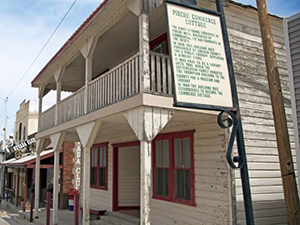
Pioche’s wild side eventually began to tame, and some reports say it was due to the influx of women into the mining town. Lore has it men were afraid to walk the streets, lest they come home married, so in 1876, the Single Men’s Protective Association was created to help “bachelors withstand the wiles of the fair sex.”
Despite its calmer nature, Pioche continued to ride a roller coaster of fortune for the next few decades. Mining production continued to ebb and flow, and despite the creation of a spur line from the Union Pacific, Pioche settled into the new century as a community of agriculture, farming, and a bit of mining.
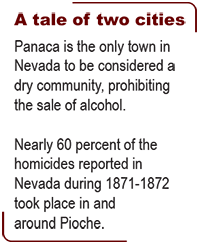 DIFFERENT PURSUITS, COMMON NEEDS
DIFFERENT PURSUITS, COMMON NEEDS
Miners occupied Pioche’s wild area in the north, while Panaca settlers established an agricultural community to provide the miners with much-needed resources for food, shelter, clothing, and salvation, if it was desired. The natural resources provided in the Meadow Valley area helped Panaca settlers grow crops of alfalfa and corn, and raise cattle and sheep, which helped sustain both communities. The towns evolved with a conflicting, yet supportive balance.
Most mining areas closed in the 1870s, as production dried up. Today, the Prince Mine in the Pioche vicinity still produces ore, but as Pioche remains as the county seat for Lincoln, government has taken over as the largest industry.
Panaca is little changed from its pioneer days; the area is still home to agricultural establishments, and is home to the middle and high schools for the towns of Pioche and Caliente, as well as Panaca.
Panaca and Pioche are both home to populations of approximately 1,000 residents today and offer a unique look at how two Nevada towns, so close in proximity, were forged from very different histories.
Nevada Magazine staff contributed to this story.
PLAN YOUR TRIP
Panaca & Pioche
lincolncountynevada.com, 877-870-3003
Panaca Sesquicentennial Celebration
July 24-26
The Panaca sesquicentennial celebration in July features a rodeo, parade, dance, hot air balloons, an original theatrical production, crafts, and an impressive fireworks display.

